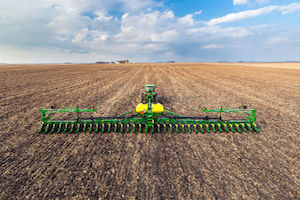Scott Tubbs, University of Georgia Tifton campus’ research cropping system agronomist for peanuts, recently shared his expert advice on the benefits of crop rotation to producers. To start, he noted that farmers are more likely to have success if they do not continuously plant their peanuts in the same field.
Instead of growing peanuts in the same area several years in a row, Tubbs says that producers can benefit from planting a rotation of crops in each field. This can prevent the build-up of diseases, nematodes and additional pest issues.
In his own research conducted at UGA-Tifton, Tubbs also honed in on the challenges of peanut root-knot nematodes. The peanut root-knot nematode has the potential to negatively impact the roots of peanut plants. In turn, this can cause the plant to swell and result in yield loss for producers. Root-knot nematode occurrences can decline if another row crop, such as cotton, is rotated with peanuts.
“Our numbers for peanut root-knot nematode decreased when going from a one-year (or continuous) rotation to a two-year rotation, where we put one crop in between peanut crops,” Tubbs said. “We reduced the number of peanut root-knot nematodes by half. If you take it out to a three-year rotation, where you grow two crops in between peanut crops, we actually reduced peanut root-knot nematodes by 90 percent.”
More information on crop rotation can be found by visiting the UGA Extension publications site at extension.uga.edu/publications.html.
